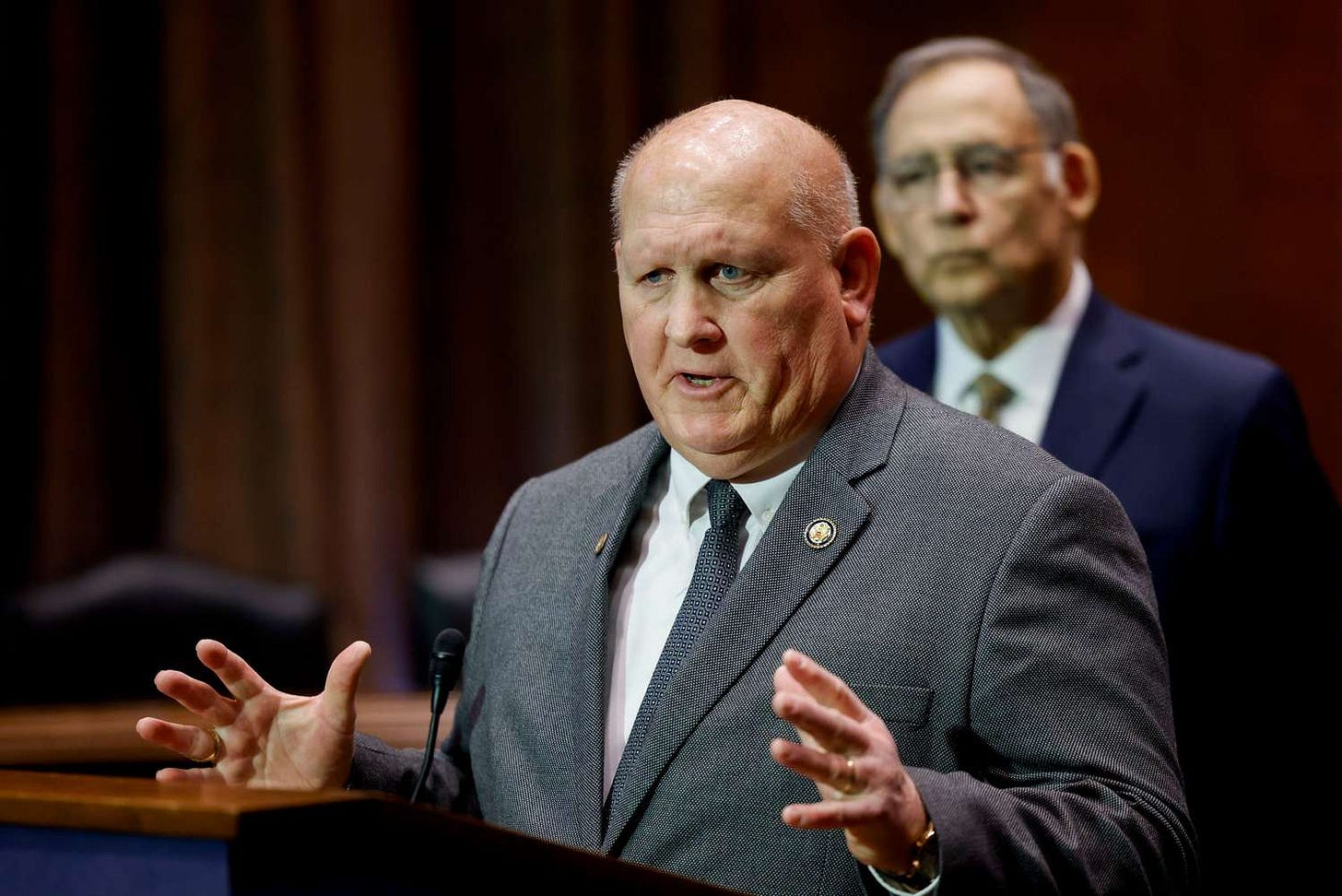Well, folks, they did it. Public Law 119-21, or as they're calling it, the "One Big Beautiful Bill Act" (OBBA), sailed through the budget reconciliation process. This behemoth of legislation is a sprawling mess, touching everything from taxes to immigration enforcement. But for those of us out here in rural America, the big question is: what does it mean for our farms and ranches?
From where I'm sitting, the OBBA is acting an awful lot like a farm bill in sheep's clothing, possibly outlining the only real changes we will see in agriculture.
The OBBA is a clear step forward for conventional commodity crops, which have faced increasing economic pressures. The law includes elevated reference prices, modernized base acres, and increased payment limitations. As written, the law is projected to funnel an extra $66 billion into agriculture over the next decade. And while this provides vital support for many, it's also true that the law doesn't establish a comparable safety net or disaster support mechanisms for other diverse agricultural sectors like livestock production and specialty crops.

The danger here is: by prioritizing these specific provisions now, we're eating up the legislative and budgetary capacity for any subsequent "skinny farm bill" to tackle the rest. It's a piecemeal approach, and frankly, it risks leaving large swathes of our agricultural landscape out in the cold. A less integrated, less equitable policy framework? I am not quite sure what makes that beautiful.
Let’s get into the details. Starting with the 2025 crop year, statutory reference prices for covered commodities are significantly up. Corn jumps from $3.70 to $4.10 per bushel, and soybeans takes a healthy leap from $8.40 to $10.00. These new prices are set to increase annually starting in 2031. It's a proactive move to beef up that safety net, and in some ways, it's overdue.
However, the Congressional Budget Office (CBO) has data suggesting that Marketing Year Average (MYA) prices for corn and soybeans might still hover above even these new reference prices for the next decade.
It’s possible the Agricultural Risk Coverage and Price Loss Coverage Programs will not generate payments under these new rates.
This system, even with the increases, remains primarily price-triggered, not cost-triggered. So, if production costs are through the roof, eating away at profits, federal support might still not kick in. It's a fundamental challenge that highlights the need for continued evaluation.
Then there's the one-time voluntary opportunity for farmers to update their base acres, starting with the 2026 crop year, with a national cap of 30 million acres. If a farm's considered planted commodity acres from 2019-2023 exceed their existing base acres, they're likely eligible. Voluntary updates typically lead to increased federal outlays.
And for those larger operations, the general payment limitation for commodity programs is getting a raise – from $125,000 to $155,000, with annual inflation adjustments. Plus, for the first time, "qualified pass-through entities" (think S corporations and LLCs not taxed as C corps) will be treated like general partnerships. That means actively engaged shareholders or members will each get their own payment limit, removing the entity-level cap.
Finally, if an individual is pulling in 75% or more of their average gross income from farming, ranching, or silviculture, they're now exempt from that $900,000 Adjusted Gross Income (AGI) limit. And marketing assistance loan rates for all covered commodities are up for crop years 2026 through 2031, providing a higher minimum price and offering some much-needed liquidity and flexibility.
Now, for our ranching community, the OBBA makes marginal improvements to existing livestock supports, focusing on post-disaster financial relief rather than proactive risk management. The Livestock Indemnity Program (LIP) will now offer financial assistance for predation and unborn livestock.
But let's be clear: while these LIP improvements are valuable, they're fundamentally reactive disaster assistance, not a comprehensive risk management safety net. Commodity programs offer price or revenue protection before a catastrophic loss. LIP steps in after the damage is done. This exposes a significant gap for ranchers, who face challenges far beyond direct animal mortality. There are no broad-based revenue or price support mechanisms for livestock here, leaving ranchers with a less robust safety net compared to commodity crop producers.
And then there are our specialty crops. The OBBA's primary mechanisms – increased reference prices, base acre updates, and direct payments for ARCPLC – are built for standardized production, readily available market data, and established historical acreage. Specialty crops, with their immense diversity, varied production systems, and often localized markets, just don't fit that mold. They lack "base acres" and standardized "marketing year average prices." While crop insurance provisions are getting a boost, these options are often less comprehensive or widely available for specialty crops compared to major commodities. The increased premium assistance for beginning farmers and ranchers is a positive, but it's not a specific safety net for specialty crops.
The fundamental design of this bill, rooted in established commodity program structures, simply struggles to provide a comparable safety net for sectors like specialty crops and many ranching operations. This tells me that future legislative efforts absolutely must rethink how risk management and support are conceptualized. The current legislative fragmentation, with this reconciliation bill tackling commodities and a subsequent "skinny bill" for everything else, only makes this challenge harder, hindering the creation of a truly holistic and equitable safety net.
So, while the upcoming "skinny farm bill" will be limited in scope and budget compared to the $67 billion poured into the OBBA, it remains our crucial opportunity to address these unmet needs.







